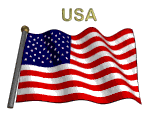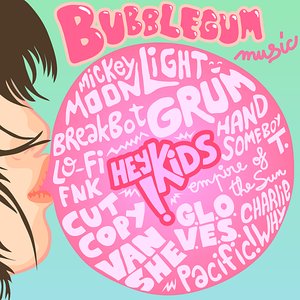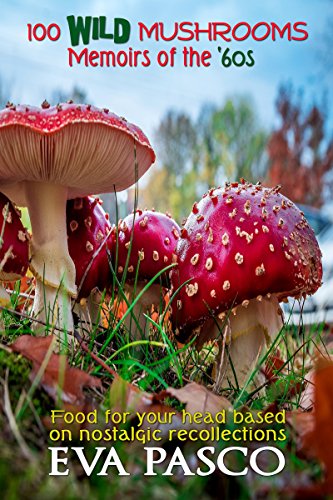
The 60s Official Site
"Where Music is Our Middle Name"
Quick Links
Your Daily Oldies Fix Top Ten Countdown Solid Gold Memories Jukebox Music
Vibration of a Nation Remember When Television of the 50s and 60s 60s Slang
Things You Just Don't Hear Anymore 60s TV Commercials Chickenman Episodes Woodstock This Weeks Number One Hits
The Early Years of Rock and Roll Vietnam War Myths
All the content menu is listed on the left menu border bar
60s Bubblegum Music
A breeding ground for the genre has also been found in the field of 1960s garage punk, the songs of which shared an overriding simplicity with bubblegum. Garage and bubblegum groups were also both generally singles acts. Several garage punk bands, including Shadows of Knight, later recorded bubblegum tracks, while Ohio Express, one of the major 1960s bubblegum bands, began their recording career with punk-rooted tunes.
Tommy James and the Shondells are also seen as a major influence, with such songs as 1965's "Hanky Panky", but critics are divided on one possible major bubblegum band prototype: The Monkees. Although the band began as a prefabricated, fictional rock group concocted to sell records and TV advertising time, the band later staged a coup and wrested creative control from their creators. The success of The Lemon Pipers' "Green Tambourine" (#1 Hit,) February 1968) was followed by a wave of bubblegum delivered by the Super K Productions team of Kasenetz and Katz, who had scored hits a year earlier with the Music Explosion's "Little Bit o' Soul" (No. 2, May) and The Ohio Express's "Beg, Borrow and Steal" (No. 29, October). In early 1968 the pair signed New Jersey band Jeckyll and the Hydes, changed the band name to 1910 Fruitgum Company and released two singles that made the Billboard Hot 100 – "Simon Says" (No.4, February 1968) and "May I Take a Giant Step (Into Your Heart)" (No. 63). In May 1968 The Ohio Express (who had also undergone an enforced name change from Sir Timothy and the Royals) scored a No.4 hit with "Yummy Yummy Yummy". The song had been written by teenager Joey Levine and accomplished songwriter Artie Resnick and released with vocals by Levine (originally recorded as a guide vocal for Ohio Express) and backing by session musicians. The song was released as an Ohio Express single without Levine's knowledge. The band released two follow-ups, "Down at Lulu's" (No. 33, August 1968) and "Chewy Chewy" (No. 15, October 1968), both of which also featured the vocals of Levine, who had never met the band, and neither featuring any members of Ohio Express. The real Ohio Express toured, supporting The Beach Boys, The Who and Herman's Hermits, with bassist Dean Kastran performing the vocals for the hits, emulating Levine's nasal-punk singing style. Kasenetz and Katz developed a strong relationship with Buddah Records, releasing a series of hits by 1910 Fruitgum Company, Ohio Express and one-offs such as "Quick Joey Small" by The Kasenetz-Katz Singing Orchestral Circus, a Levine-fronted group of studio players. Kasenetz and Katz also scored on Bell Records in early 1969 with "Gimme Gimme Good Lovin" by another manufactured band, Crazy Elephant. The dominance of the Kasenetz-Katz team was challenged from mid-1968 by the trio of Bogart – who by then had resigned from Buddah Records – music publisher Don Kirshner and "Hanky Panky"'s co-author, Brill Building writer/producer Jeff Barry. A year earlier Kirshner had been removed from the music team behind The Monkees, a made-for-TV pop band that finally rebelled against his strict creative controls. Since 1966 singles and albums had been released under the name of The Monkees, despite usually having no more than one member contributing vocals. Kirshner envisaged a manufactured group over which he would have even greater control: a cartoon band, The Archies. He enlisted Barry and Andy Kim as song writers, Ron Dante as vocalist and session musicians including Hugh McCracken, Gary Chester, Chuck Rainey and Ron Frangipane to provide the music. The fictional band's "Sugar Sugar" was the best-selling single of 1969 and the band scored five more Top 100 singles including "Bang Shang-a-Lang" and "Jingle Jangle." Cartoon producers Hanna-Barbera created The Banana Splits, with costumed actors miming to pre-recorded tracks for a Saturday morning cartoon show, around this same time. Other animated acts included Josie and The Pussycats (from Hanna-Barbera), The Hardy Boys (Filmation), the Groovie Goolies (Filmation), The Sugar Bears, and (in the UK) The Wombles. The initial era of bubblegum carried on into the early 1970s, with hits from The Cowsills, David Cassidy and The Partridge Family, The Jackson 5, The Osmonds, The DeFranco Family and others. The Evolution Revolution was an all-simian bubblegum band on ABC-TV's Lancelot Link, Secret Chimp from 1970 to 1972; the vocals were by Steve Hoffman, (no relation) with many studio musicians from The Grass Roots' recording sessions. Sesame Workshop, then called Children's Television Workshop, also jumped on the bubblegum bandwagon with a juvenile group called "The Short Circus" from its new series, The Electric Company, who would also double as kid cast members in various sketches in the show. Many British acts of the first glam rock era (approximately 1971-1975) had bubblegum influences. These included Gary Glitter, Alvin Stardust, T. Rex, and such Nicky Chinn/Mike Chapman-produced acts as Sweet, Mud, and American expatriate Suzi Quatro. These acts had great success in the UK, Asia, Europe and Australia, charting many singles. They were less successful in the US, however. Bubblegum maintained a minor presence on the US charts in the late 1970s, particularly through Shaun Cassidy (David's half-brother) and Leif Garrett, both of whom also maintained television acting careers. The last big act of the '70s that featured obvious bubblegum elements were the Scotland-based Bay City Rollers, who charted hits through the end of the decade. In 1997 bubblegum enjoyed a revival through the popularity of British girl group the Spice Girls, who shared with the bubblegum pop acts of old the production of catchy, simple, up-tempo pop tracks aimed at younger music buyers, a line-up assembled by producer-svengalis, and heavy merchandising aimed at a similarly young audience. As you can see no matter how you feel about the bubblegum music phenomenon of the 60s, it played an important part in musical history actually beginning in the 50s with Patti Page's "How Much Is That Doggy In The Window." |
|





